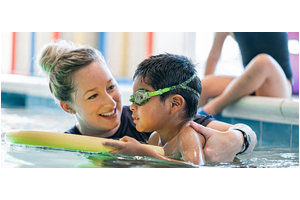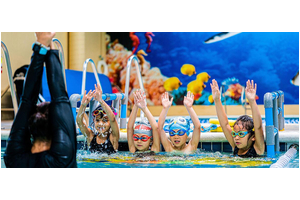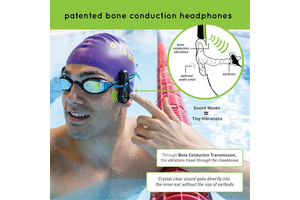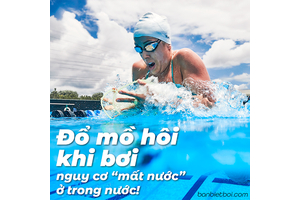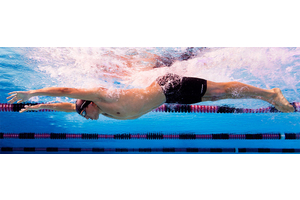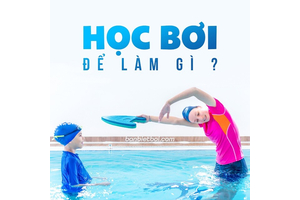Dr. Zachary Hojnacki, SwimSwam
January 30, 2020
How Was Your Race?
Coach: “Good job, how do you feel about that swim?”
Swimmer: *shakes head* “That was terrible.”
Coach: “Why do you feel that way — your stroke technique was strong and efficient, and you executed the race well.”
Swimmer: “Because I added…”
Our program recently traveled across the country from New York to Arizona to compete in a terrific and uniquely formatted competition hosted by Phoenix Swim Club called the Arizona Dual Meet Championships. Aside from the benefits the team travel experience provided for our 14 & under athletes in their developmental process, the dual meet format brought out the best in our kids. It was a significant departure from the traditional weekend swim meet experience, where the emphasis is often on maximizing the number of events swum and personal best times achieved. This weekend was instead about racing: fighting for first not only for yourself, but for your team. Competition is pure and fun, and somewhat lacking in today’s swim experience. I believe we have somewhat overcorrected and could benefit as a sport from shifting our emphasis back towards racing.
Where We Got Lost
I suspect that in the early stages of the sport, competition was the primary focus. Somewhere along the way, coaches and parents encouraged athletes to direct their attention towards improving their personal best times as a means to discourage obsessive comparisons to the success of other athletes, and to instead prioritize self-improvement. I agree that is a healthy and appropriate mindset, and that constant comparisons to other swimmers is a recipe for constant disappointment and discouragement.
However, it feels as though we have veered off course from what that mindset was originally intended to promote. Walking around the pool deck, speaking to my own athletes or listening to the conversations of others, times are often the only focus. Evaluation of race outcomes has become binary – drop time = good swim, add time = bad swim. As athletes grow older and less frequently perform their personal bests, their relationship with the sport begins to sour. Even as they understand that a personal best time is not a realistic expectation at certain phases of the season, there is a tendency to compare times to past seasons or to other swimmers in an effort to project taper times. If those times don’t meet the swimmers’ expectations, they are quick to panic and self-doubt creeps in. For some, there is a decreased willingness to compete in meets during the phases of training where fast swims are least likely, even as these competitions are important prerequisites for end-of-season breakthroughs.
What We Are Communicating to Young People
Parent: “Nice racing today! 3 out of 4 best times! We just need to fix that backstroke!”
Parent: “What happened out there? Why were you so far off your best? Is something wrong?”
Coach: *Emphatically* “You dropped 3 seconds!”
As adults, we are culpable here. Post-race feedback is often littered with discussion about races in terms of total time, proximity to best, etc., rather than objective evaluation on the basis of execution of strategy, technical proficiency, or in the context of training performances and goals. We reward athletes for achieving personal best times by congratulating them and affirming the accomplishments as if they were solely a reflection of effort. The truth is that personal best times can be accomplished with less than maximal effort and poor execution, while swims slower than your previous best can be effortful and flawlessly performed.
The Stats
I believe that the overemphasis on racing times is somewhat dangerous, particularly for older athletes. The national average improvement percentage for a 15-16-year-old girl in 2019 was .93%. The picture for 17-18 girls was bleaker still, with an average of negative .3%.When our communications exclusively reward personal bests and demand explanation for swims that fail to meet that criterion, it implies that swimming our best is merely a reinforceable behavior as opposed to a complex and challenging long-term pursuit. This also suggests failure is always controllable and completely avoidable — which, in a sport where failure is incredibly common, is extremely demoralizing and simply not true.
It is important that our coaching leadership educate athletes on the impact growth and maturation has on performance in swimming, particularly for young girls. Besides keeping young people enrolled in the sport, perseverance often pays off for those that can transition into strong collegiate athletes. Each year, I sit down with our teenage swimmers to discuss how age and physical maturity may impact short-term outcomes in the near future. The examples of well-known Olympic athletes below illustrates how drawn out plateaus can be, but also how successfully navigating those challenging phases can pay dividends in the long-term.
Missy Franklin-
200 Bk:
- 12->13: 2% improvement 13->14: 4% improvement
- 14->15: <1% improvement 15->16: 2% improvement (Olympic Qualifier)
- 16->17: <1% improvement (World Record) 1
Cammile Adams-
200 Fly:
- 12->13: 0% improvement 13->14: 6% improvement
- 14->15: <1% improvement 15->16: 0% improvement
- 16->17:<1% improvement 17->20: No improvement (added time)
- 20->23: 3% improvement (Olympic Qualifier)


